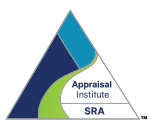“If a landscaping change is positive, it can often enhance price and reduce a home’s time on the market,” said Appraisal Institute President Richard L. Borges II, MAI, SRA. “But if the change is negative, it can lower the price and lengthen the time a home remains for sale.”
Curb appeal is essential when selling a home, Borges said, noting it’s the homeowner’s opportunity to make a great first impression. A home with lackluster landscaping or an exterior in desperate need of a fresh coat of paint will likely be unappealing to prospective buyers and ultimately could affect the home’s potential resale value, he said.
Landscaping is typically associated with lawns, trees, bushes and flowers. But other items also can be considered part of landscaping, such as fire pits, decks, patios, waterfalls, swimming pools and outdoor lighting … all of which could add to the value of the home.
Borges added that homeowners should trim growth regularly, replant approximately every 5 to 10 years depending on growth and not “overwhelm” the house. He also advised that homeowners check out what their neighbors have done and keep landscaping maintenance and improvements on par with neighborhood norms.
According to the International Association of Certified Home Inspectors, trees that are too close to buildings may be fire hazards. Additionally, larger tree root systems that extend underneath a house can cause foundation uplift and can leech water from the soil beneath foundations, causing the structures to settle and sink unevenly.
According to a recent study conducted by Lawn & Landscape magazine, about two-thirds of homeowners say they’ll get less than 60 percent of their landscaping investment back when they sell the home.
“Landscaping improvements could make an impact on resale value, and homeowners need to consider how long they’ll be in the home and whether to make short-term updates or plan for the long haul,” Borges said.
Borges said homeowners should ask themselves the following questions when it comes to the quality of their home’s green space:
- Is the landscaping attractive enough to make the prospective buyer walk through the front door? Keep the design contemporary and in line with comparable properties in the area.
- Could the landscaping provide cost savings? Landscaping that requires little or no water to maintain could be desirable depending on the geographic area.
- Is the landscaping energy-efficient for the home overall? For example, it’s a good idea to plant trees in a place where they block the sun in locations with year-round hot climates.
- Are the trees planted at a safe distance from the home and are they healthy and well maintained? Weak, old or damaged trees planted too close to a home or building could pose dangers to the home’s structure and will need to be removed. Consumers should also be sure that mulching or beds don’t get too close to wood around foundations to avoid wood-destroying organisms.

 RSS Feed
RSS Feed
